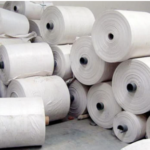Weeds are every gardener’s nemesis, capable of ruining the aesthetics of your landscape and competing with desired plants for nutrients and water. If you’re looking for a sustainable and effective way to combat weeds, weed barrier fabric is an essential tool. Often considered the backbone of modern landscaping, the best weed barrier fabric provides long-term weed control while maintaining soil health and moisture levels.
In this blog, we’ll explore why weed barrier fabric is indispensable for landscaping projects, its benefits, and how to choose the best option for your needs.
What Is Weed Barrier Fabric?
Weed barrier fabric, also known as landscape fabric, is a geotextile material designed to prevent weeds from growing in landscaped areas. It is typically made from woven or non-woven polypropylene or polyester, offering durability and permeability.
Types of Weed Barrier Fabric:
- Woven Fabric: Made of tightly woven fibers for strength and durability. Ideal for heavy-duty landscaping.
- Non-Woven Fabric: Features bonded fibers for better water permeability, making it suitable for gardens and flower beds.
- Spun-Bond Fabric: Combines strength and permeability, offering a balanced solution for most landscaping projects.
Why Weed Barrier Fabric Is Essential for Landscaping
1. Provides Long-Lasting Weed Control
The best weed barrier fabric acts as a physical barrier that blocks sunlight from reaching the soil, inhibiting weed growth. Unlike chemical herbicides, which may harm nearby plants and the environment, weed barrier fabric provides a safe and sustainable solution.
2. Reduces Maintenance Effort
Weeding is one of the most time-consuming aspects of landscaping. By using weed barrier fabric, you can significantly reduce the frequency of weeding, allowing you to focus on other aspects of garden care.
3. Enhances Soil Moisture Retention
Weed barrier fabric helps retain soil moisture by reducing water evaporation. This is particularly beneficial in hot or dry climates where water conservation is critical.
4. Improves Plant Health
By reducing competition from weeds, the fabric ensures that your desired plants have access to essential nutrients, water, and sunlight, promoting healthier growth.
5. Prevents Soil Erosion
Weed barrier fabric stabilizes the soil, preventing erosion caused by heavy rainfall or wind. It is especially useful on slopes and in areas prone to water runoff.
6. Environmentally Friendly
When paired with organic mulch, weed barrier fabric provides a chemical-free solution to weed control, making it an eco-friendly choice for sustainable landscaping.
Applications of Weed Barrier Fabric in Landscaping Projects
1. Garden Beds
Lay the fabric under flower beds, vegetable gardens, or shrubbery to keep weeds at bay while allowing water and nutrients to reach the roots.
2. Pathways and Walkways
Use weed barrier fabric under gravel, pavers, or stones to prevent weeds from sprouting between the cracks and maintain a clean, finished look.
3. Sloped Areas
Install fabric on slopes to stabilize the soil and prevent erosion while keeping the area weed-free.
4. Mulched Areas
Weed barrier fabric works well under layers of organic or inorganic mulch, ensuring that the mulch stays in place and weeds don’t grow through.
How to Choose the Best Weed Barrier Fabric
1. Durability
Opt for a heavy-duty fabric if you’re working on large-scale or high-traffic areas. Thinner fabrics are suitable for light gardening.
2. Permeability
The fabric should allow water, air, and nutrients to pass through while effectively blocking weeds.
3. UV Resistance
UV-resistant fabrics last longer when exposed to sunlight, making them ideal for outdoor projects.
4. Ease of Installation
Look for a fabric that is easy to cut and install without fraying or tearing.
Tips for Installing Weed Barrier Fabric
- Prepare the Area: Remove existing weeds, debris, and rocks from the area. Level the soil before laying the fabric.
- Cut the Fabric: Use scissors or a utility knife to cut the fabric to the desired size.
- Anchor the Fabric: Secure the edges with landscape staples or pins to prevent shifting.
- Cover with Mulch: Add a layer of mulch or gravel on top to protect the fabric and enhance the landscape’s appearance.
Final Thoughts
The best weed barrier fabric is a valuable investment for any landscaping project, providing effective weed control, improving soil health, and reducing maintenance efforts. Whether you’re creating a garden bed, pathway, or slope, weed barrier fabric ensures your landscaping looks pristine and functions efficiently.

